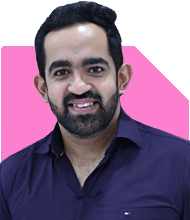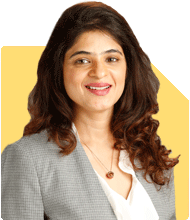Hello Sir/Mam.
I have a question related to investment in equity mutual fund.My wife and I both comes under zero percent tax bracket but we both do job and there is chance that in future we both can come in tax slab.
I want to invest in equity mutual fund for long term around 18 years or more.there is long term capital gain tax applicable on these fund on redemption.does there is any saving of tax if I invest in these mutual fund on my mom or dad names because they will always remain in 0 percent tax slab?
Ans: It shows your care for long-term wealth creation. You are considering legal ways to reduce tax outgo on mutual fund investments. That is a good initiative. But this kind of decision needs to be taken only after checking all angles. Let’s analyse your situation with full clarity and depth.
Your Objective Is Clear and Appreciated
You plan to invest in equity mutual funds.
Your goal is to invest for 18 years or more.
You and your wife are working now.
Currently in the 0% income tax slab.
In future, you may enter taxable slabs.
You want to know if investing in your parents’ names helps save capital gain tax.
It is thoughtful that you want to plan for future tax impact today.
That foresight is good and appreciated.
Let’s now analyse the idea of investing in parents’ names from all angles.
Capital Gains Tax Rules for Equity Mutual Funds
You mentioned correctly about capital gain tax on equity mutual funds.
Here’s how tax works now:
If you redeem after one year, it is called Long Term Capital Gain.
LTCG above Rs.1.25 lakh in a financial year is taxed at 12.5%.
Short Term Capital Gains (sold within one year) are taxed at 20%.
This tax is applied only on profits, not on total amount withdrawn.
So yes, tax saving is possible if you plan redemptions wisely.
Will Investing in Parents’ Name Help Save Tax?
At first glance, yes, investing in parents’ names may help reduce tax.
Because your parents are always expected to be in 0% tax bracket.
But we must not see only one side.
Let’s assess other angles also.
Benefits If Done Properly
If fund is held in your parent's name, then capital gain tax is calculated for them.
If they are below taxable slab, and LTCG is below Rs.1.25 lakh, no tax is payable.
Even above that, tax may be saved by spreading redemptions.
So yes, technically, this can help reduce tax legally.
But this only works if you follow all rules and documentation carefully.
Risk of Clubbing Provisions
Income tax law has a rule called “Clubbing of Income”.
This applies when you gift money to someone but control remains with you.
In your case, if:
You invest in mutual fund in your mother or father’s name,
But you keep control and benefit from that investment,
Then income tax department can “club” the income in your hands.
So capital gain will be added to your taxable income.
Then your tax saving plan may fail completely.
However, clubbing does not apply when you gift money to parents.
It applies only when gifting to spouse or minor child.
So in your case, clubbing of income will not apply if gifted to parents.
That gives one green signal to this idea.
But still, only gifting is not enough. More care is needed.
Ownership and Control Must Match
Even if clubbing does not apply, ensure these conditions:
Money should be gifted clearly to your parent.
Gift deed can be done, even if not registered.
The mutual fund folio should be in their name.
They must be primary and only holder of folio.
PAN, bank account, KYC should be in their name.
All transactions and redemptions should go through their bank account.
They should be aware of the investment.
If all these are followed, then the ownership is clean.
Then capital gain will be taxed in their hands.
That way, your tax-saving strategy will be strong and correct.
Practical Challenges You Must Understand
Though tax saving is possible, there are some practical challenges:
If your parents are not financially savvy, they may not track the fund properly.
You may need to support them in documentation, signatures, redemptions.
If any emergency occurs, you may face delay in accessing funds.
If something happens to them, the investment will be part of their estate.
Then legal process like transmission and succession will be needed.
Joint holders can help but should be structured properly.
If too much amount is kept in parent’s name, later family disputes may arise.
So even if it helps save tax, execution must be very careful.
Legal clarity and paperwork must be perfect.
Compare Tax Saving vs. Operational Simplicity
You are trying to save 12.5% LTCG tax on long-term gains.
That tax is only on the gain amount, and only above Rs.1.25 lakh.
For example:
If capital gain is Rs.2 lakh, only Rs.75,000 is taxed.
Tax on that is Rs.9,375 only.
Now, compare this small saving with:
Effort of creating separate folio
Managing another PAN and KYC
Following proper gifting route
Tracking tax filing in parent’s name
Managing fund if parent is not tech-friendly
Handling succession if parent passes away
In many cases, the extra effort may not be worth the tax saved.
So you must balance tax saving with ease of control and operation.
Should You Transfer Future SIPs Also to Parents’ Name?
If you plan to invest SIPs for next 18 years, you may think to start those in parent’s name too.
But this brings added complication:
Their age is increasing. Health risks may affect operations.
You may lose easy access to your own long-term money.
Goal ownership gets diluted.
You may not feel emotionally safe in using the funds later.
Tax rates and laws may change in future.
They may also come under taxable income due to FD or other income.
So yes, technically, it is possible.
But it is not always the best path.
A Better Tax Planning Strategy for You
Instead of shifting everything to parent’s name, you can:
Keep investing in your and your wife’s name.
Split investments equally to use both Rs.1.25 lakh LTCG exemption.
Plan redemptions properly over years.
Avoid redeeming large amount in one financial year.
Use goal-linked withdrawals, not random redemption.
Track performance and capital gain in each folio.
Consult Certified Financial Planner to plan exit well.
That way, you stay in full control.
And still reduce long-term tax impact efficiently.
If You Still Want to Invest in Parents’ Name
Then follow these points carefully:
Make a clear gift to parent through cheque or NEFT
Use their PAN and Aadhaar for KYC
Open mutual fund folio in their sole name
Use their email and phone for communication
Bank account should be in their name only
Make them nominee-wise clear
Create Will or succession plan for legal clarity
Keep transaction record of gift amount
By doing this, you build strong documentation.
And avoid future tax queries or disputes.
Don’t Forget About Behavioural Discipline
If you keep investing in your own name, you track it more seriously.
You take responsibility for growth, goals and review.
Parents may not be emotionally connected to the fund’s long-term goals.
They may redeem early or withdraw on someone’s suggestion.
This breaks your compounding journey.
So, sometimes paying a little tax is better than losing long-term focus.
Also, with a Certified Financial Planner, you can design a low-tax withdrawal plan.
No need to shift ownership to parents just for saving tax.
Final Insights
Tax planning should be part of investment planning.
But it should not drive all decisions alone.
Saving Rs.10,000 tax but losing peace of mind is not smart.
Your idea is right. But execution needs full care.
If you decide to invest in parent’s name, follow gifting route properly.
And maintain clarity in ownership and operations.
But for most cases, staying in control and planning exits well works better.
You and your wife can easily enjoy Rs.2.5 lakh combined LTCG exemption every year.
That itself gives huge tax-free withdrawal potential.
Also, tax rules change every 3–5 years.
So keep reviewing your strategy with your Certified Financial Planner.
Best Regards,
K. Ramalingam, MBA, CFP
Chief Financial Planner
www.holisticinvestment.in
https://www.youtube.com/@HolisticInvestment



























